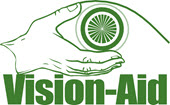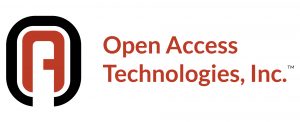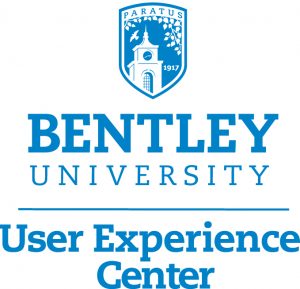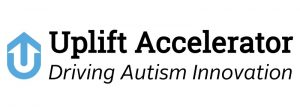Session Descriptions (2019)
- About
- Sessions
- Speakers
- Schedule
- Sponsors and Organizers
Main Sessions
Keynote: We Count
Jutta Treviranus, Inclusive Design Research Centre, Ontario College of Art and Design University
How does inclusive design reduce cost, increase dynamic resilience, and support sustainability? In an increasingly complex and variable world, our decision systems are structurally unprepared for complexity and variability. This has influenced work, education, research, markets, finance, and even democracy. This deficiency is being transferred to our new automated decision systems; while the only value we have imparted is popularity. This means that the “power tools” of Artificial Intelligence (AI) will amplify existing inequities and societal deficiencies. What role do people who aren’t considered in the design of our existing systems play in addressing this? What assumptions and conventions do we need to unlearn to reverse this pattern?
Strengthening Leadership and Executive Support for Accessibility
Sponsored by Fidelity Investments
How do we persuade decision makers at the top that A11y belongs among the top priorities for any company who believes themselves to be “customer obsessed”? Often discussions about prioritizing accessibility focus on areas like:
- Compliance – how do we not get sued?
- Facilities – how do we modify the standard experience for people with disabilities?
- Diversity & Inclusion – are we all being treated respectfully and being included in our own firms?
But that is not enough! We believe that a truly accessible experience should be designed into default interactions for everybody, and that all customers benefit from this simple shift in thinking. Support for this shift needs to come from the top or it will never last. In this session we will explore how some firms have successfully convinced executives to become A11y champions. What decision criteria do they rely on? How do they engage in prioritization exercises? What elements of a business case will resonate most with them? How do we put them at ease when there is potential for them to feel uncomfortable talking about disability in the context of critical strategic initiatives?
The unfortunate truth is that many decision makers at the top have never had the conversation in this way, but once they do it has the potential to put A11y efforts at your firms into high gear.
Accessible Accessibility Testing
Gold Level Sponsored by Vision-Aid
- What are the advantages of having people with disabilities do accessibility testing?
- What are some of the challenges of having people with disabilities conduct WCAG 2.x compliance testing?
- How can these challenges be overcome?
- Are accessibility-testing tools accessible?
- If a company wants to conduct usability testing with people with disabilities, how could it get started?
- If people with disabilities want to get paid to do accessibility and/or usability testing, how could they get started?
Moderator
- Glenda Sims, Deque Systems, Inc.
Panelists
- Becky Gibson, Knowbility
- Cheryl Cumings, Our Space Our Place
- Jeanne Spellman, The Paciello Group
- Karl Groves, Tenon
- Ram Raju, Vision-Aid
- Rich Caloggero, MIT Assistive Technology Laboratory and WGBH National Center for Accessible Media
Break-out sessions
Behavioral Change Support Systems
Prateek Jain, User Experience and Decision Making (UXDM) Research Laboratory, Worcester Polytechnic Institute
Augmented Reality (AR) is becoming increasingly popular for developing engaging user experiences. In this session, we explain how we use AR as a feedback mechanism to improve decision quality. In particular, we explain how we use AR to simplify complex information, such as nutrition fact labels, to make it more accessible. We developed a mobile application that scans nutrition fact labels and provides simple, personalized feedback using both visual and audio AR. Our research shows the AR feedback has a significant impact on decision quality because it makes nutrition fact labels easy to understand. Our research suggests AR has the potential to serve as an effective feedback mechanism in a behavioral change support system to help improve health outcomes.
Creating Intersectional and Inclusive Personas
Ryan Lamarche, User Experience and Decision Making (UXDM) Research Laboratory, Worcester Polytechnic Institute
Personas are an amazing tool for research, marketing, development, and design. But sometimes, when we generalize, we miss the mark on representation. In this session, we will discuss the use of the IKE User Experience platform for developing personas that can better represent your users, and some techniques for making sure your personas are able to represent people with disabilities effectively.
EasyText.AI Student and Developer Panel
Gold Level Sponsored by INDEX (DisabilityInfo.org)
Latest update on research and development of EasyText.AI: Artificial Intelligence-driven, mass-scale, web text simplification for people with cognitive disabilities, non-native language speakers, and for all people who struggle with literacy.
Moderator
John Rochford, INDEX Program (DisabilityInfo.org), Eunice Kennedy Shriver Center, University of Massachusetts Medical School
Panelists
- Benjamin Amankwata, Dev/Ops Engineer, INDEX Program, Eunice Kennedy Shriver Center, University of Massachusetts Medical School
- Viet Do, Web and Database Developer, INDEX Program, Eunice Kennedy Shriver Center, University of Massachusetts Medical School
- Aurom Lum, Student, Fitchburg State College
- Triet Vo, Student, University of Massachusetts Boston
Frameworks and Methods for Inclusive Products
Corey Roth, senior designer Cantina, and Randy Duke, II, Experience Strategist at Cantina
Designing ethical and inclusive products is more than an accessibility checklist. Even more hurdles exist when designing inclusive services in complex industries. This talk covers research methods and frameworks for building inclusivity into your design process from the beginning. Real-world examples will be included, from designing inclusive music apps to designing holistic chronic care management services for underserved populations.
Mobile Accessibility Testing
Peter McNally, User Experience Center, Bentley University
In 2019, mobile devices are fast becoming (if not already) the main way people access information. It is critical that we have a well-defined accessibility testing strategy for mobile experiences. Over the past two years, the ICT Accessibility Testing Symposium has developed a methodology for evaluating the accessibility of mobile web sites and apps. This presentation will provide an overview of the ICT mobile accessibility testing methodology. It will also include critical issues to look out for when designing and evaluating mobile experiences.
More than just legible and noticeable: Everything designers should know about contrast
Jeff Witt
You’re a designer and you’re enthusiastic about accessibility, but don’t yet know the practical impact on your daily work, this talk is for you.
We’ll cover:
- User scenarios and personas to keep in mind
- A skim of the complex biological roots of contrast perception
- How to ensure adequate contrast with new and existing design systems, while optimizing design cohesion, brand strength, and usability
- Quirks of the W3C’s luminance contrast formula
- When and how to use animation
- What THEY don’t tell you about user preferences
- How to support High Contrast and Dark Mode
- Tools for testing WCAG conformance and more
- Tools that users may use for legibility and noticeability, and how to work with them
- How to weigh the competing needs of users with dyslexia and moderate vision impairment
- How to optimize text and shapes in charts and infographics
Quick Start to Accessible Video
Samantha Sauld, 3Play Media Content Marketing Specialist
In this presentation, you will learn the basics of how to make video accessible, searchable, and SEO-friendly. This session covers legal compliance, the creation of closed captions and audio description, relevant lawsuits and how they apply to your organization, as well as an overview of the benefits of accessible video. Come away with a greater understanding of what you need to do and how to get started.
Universal Design for Service Experience
Christopher Chagnon, User Experience and Decision Making (UXDM) Research Laboratory, Worcester Polytechnic Institute
Service experience design helps us create and improve the end-to-end delivery and provisioning of our services to our customers and users. Universal design lets us look at our experiences through multiple lens in order to make sure that they enable as many people as possible to leverage them. This session will cover how we can design experiences and services to be accessible using universal design best practices.
Using technology to create wearable navigational devices for the blind
Sidharth Anantha
In this presentation, Mr. Anantha discusses the applications of technology in navigational devices for the blind. Mr. Anantha explains how machine learning and echolocation can be used to give the blind a greater sense of spatial awareness, and tells the story of his own invention – Seeing for the Blind.
Using Technology To Impact Autism
A panel discussion with 3 startups that are using technology to simplify and streamline the lives of children and adults with autism.
Participating Startups
- Cognitopia develops life management applications for people who see the world a little differently. We create cognitively accessible web applications for self-management and executive functioning that help people with cognitive disabilities be more independent while helping caregivers provide better support. Cognitopia will be represented by Tom Keating and Phil Hayes.
- WellStats is a technology solutions company focused on helping agencies who serve vulnerable populations to increase their efficiency and effectiveness through the automation of data collection and analytics. Our mission is to merge the world of data with Social Determinants of Health on a person-centered level to expand access, inform choice, reduce waste and create meaningful change. WellStats will be represented by Malia Faleafine.
- InCare is an integrated mental health care service that’s optimal for all-around care. We provide low-cost therapy devices for people with Neurological Differences (autism, brain trauma, and mood disorders). InCare will be represented by Pamela Cooper.
Questions for Startups
- Which areas of technology can be most impactful?
- How will you measure impact?
- Any advice for new entrepreneurs entering this area?
- What is the most important thing that <insert startup solution> has done for this population? (Examples?)
- What are good areas where <insert startup solution> can create real value for people on the spectrum?
Moderators
- Bharat Ramani, Uplift Innovation, Inc.
- Chris Patel, Uplift Innovation, Inc.
What’s So Important About Accessible Content?
William O’Donnell, Marketing and Social Media Manager, Open Access Technologies
William will present why accessible content is so important to organizations and individuals alike. Blind since birth, he knows first-hand how accessible content improves the online experience and is good for business. Adept in technology from an early age William has benefited from the use of technology from the days prior to the internet through today’s mobile digital economy!
He will share his experience, from an end-user perspective, as-well-as the importance of making the shift from accommodating individuals to making content accessible for all.
Attendees will leave this presentation with a better understanding of how providing accessible content removes barriers, makes organizations more inclusive, enhances the user experience, increases the addressable market for their products and services and makes them a more socially conscience well-respected organization.
Come prepared to ask questions and be engaged!








